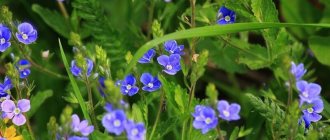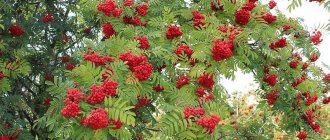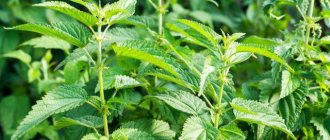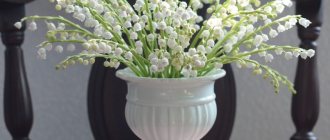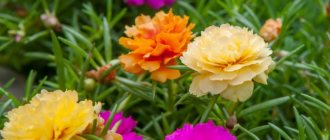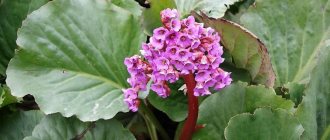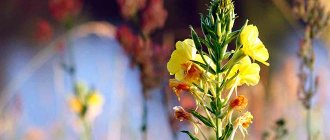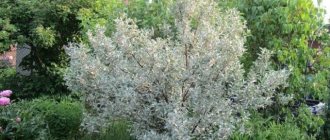The famous umbrella trees growing in the haze of the African savanna are representatives of the large Acacia genus, belonging to the Legume family. In countries further north, they have relatives with luxurious foliage, interesting wood and decorative inflorescences. This article will help you understand what different types of acacias look like, how they reproduce, when they bloom, and what medicinal properties they have.
Acacia photo
How does an allergy to acacia manifest itself?
Acacia is a strong allergen , or rather its pollen. A person’s poor condition is often called “spring allergies .
This happens because the acacia tree (or bush) begins to bloom in April, and the period of violent flowering occurs in May. These are the two warmest and most pleasant spring months, which for some people are very difficult.
What is acacia allergy and where does it come from?
What is an allergy and how does it occur? Allergy is a completely understandable biological process . During flowering, the acacia, which is male cells, “tries” to reproduce its type of plant in a new generation. That is why the flower releases pollen , which is sprayed into the air.
This pollen is essentially a plant protein. It has a very complex structure, consisting of many components that enter the human respiratory organs with air.
If a person has an allergic predisposition (weak immune system or heredity), pollen instantly causes an allergic reaction.
acacia pollen Hay fever is a reaction of the body that is accompanied by tissue damage. The human hormonal background also suffers, because the body tries to resist the foreign substance .
Hormones such as:
- Histamine
- Bradykinin
- Serotonin and other substances
Allergy to acacia is called “spring allergy”
Symptoms of an allergic reaction to acacia
It is important to know that an allergic reaction to acacia pollen can occur at any age, in both adults and children. It all depends on how strongly a person is predisposed to allergies and how concentrated the substance has entered his body.
The most common symptoms of this allergy are:
- Skin damage : itching, irritation, redness.
- Damage to the respiratory tract : copious secretion of mucus (snot), swelling of the nasal sinuses, obstruction of mucus, irritation of the mucous membrane, redness of the mucous membrane, itching of the mucous membrane, burning sensation in the nose.
- Gastrointestinal tract disorders
- General malaise , drowsiness.
- Apathy , bad mood, depression
- Sneezing or coughing (if the bronchi are involved in the allergic process.
- Shortness of breath.
- Conjunctivitis.
The weaker a person’s immune system and the more pollen that enters the body, the more severe the allergy. Sometimes the symptoms are so strong that they completely limit a person’s viability.
Acacia pollen is an allergen that enters the human body through the respiratory tract.
How to grow, care and pests and diseases
To grow acacia, you don't need any special skills. It is enough to plant the plant in a place where it will be protected from the wind and at the same time receive the required amount of light. Almost all types of acacia are very unpretentious, which is why you will not have any difficulties planting trees and shrubs on your property.
Acacia flowers: types and varieties - description
Acacia is a tree distributed throughout the world . The tree blooms in May (if the weather is favorable at the end of April). The tree's blossoms may be white, yellow or pink.
The plant has a strong root system, thanks to which the tree receives the maximum of necessary substances and water. The bark of the plant has longitudinal barbs and can have different shades:
- Light gray - indicates that the tree is “young”
- Brown – in “old” and dying trees
The leaves of the tree are ovoid and green in color. Most acacias have thorns they can also be completely absent. The acacia tree has very lush flowering.
Flowers can be large or small. In some cases, single buds are found, but most often the tree blooms in clusters.
Leaves, thorns and branches of acacia
There are many varieties of acacia and each tree is distinguished by its flowering:
- Corkscrew acacia - this tree can very often be found in city parks. This acacia has white flowers that hang in lush clusters twenty centimeters long. Flowering lasts two months: from May to June. It is not uncommon for a tree to bifurcate its trunk.
- Golden acacia - the tree is distinguished by its relatively small size. Acacia has several trunks. You can distinguish it by its leaves: they are elliptical in shape and light yellow in color. The flowers of the tree are bright yellow, bloom: May, June.
- White acacia "Robinia" is a tree with white fragrant flowers. It has green but odd-pinnate foliage. This acacia is poisonous and should not be consumed orally.
- Umbrella acacia - often called "cone acacia". A tall tree, often with several trunks. It is distinguished by lush openwork foliage and not lush flowering. White flowers have a long yellow stamen. Flowering occurs in white clusters.
- Street acacia is not a thorny tree. The leaves of the tree are not paired, dark green (matte) in color. The leaves of this acacia tree are poisonous and should not be consumed orally. The branches are zigzag. Flowering is distinguished by large white clusters. The flowers smell very pleasant and sweet.
- Bristle acacia is a tree-like shrub. Its height does not exceed two meters. The roots of the bush are deep and powerful. The branches are prickly and zigzag. Flowering occurs in large flowers, which most often have a pink or purple tint. Flowers don't smell.
- Pink locust - the tree has smooth brown bark. Sometimes there are small thorns on the tree. If the tree sprouts shoots, they are wrapped in an adhesive film. The flowers are large, long, bright green. Acacia flowers are large and pink. Flowering racemes are often covered with hairs that are sticky to the touch. The tree is a honey plant.
- Silver acacia is known to everyone as “mimosa”. The tree is evergreen, its homeland is Tasmania, Australia. If there are cracks in the tree trunk, gum leaks out through them. The leaves are green with a gray tint. The flowers are small and visually resemble yellow balls.
Corkscrew acacia
White acacia Umbrella acacia
yellow acacia
Bristle acacia
Pink acacia
Silver acacia
Application
Acacia is an ornamental plant that is usually planted as a hedge. Some of its species, due to their dense root system, are also planted to strengthen the soil.
Another area of application is cosmetology and perfumery. In this case, we mean Chinese acacia. Often the flowers of this plant are used to create a fragrant oil that has a number of relaxing and healing properties.
The fact that acacia is widely used in folk medicine deserves special attention. Decoctions and infusions are often created from it to cope with a large number of ailments.
Acacia white, pink, yellow: beneficial and medicinal properties and contraindications
Acacia is a plant that has many beneficial properties . white acacia should be highlighted , since it contains the maximum amount of vitamins , oils and other biologically important components.
White locust is very common. This tree is the main honey plant. Pink acacia is a variety of white acacia , but it is much less common. Pink acacia flowers have a large amount of sweet pollen, which attracts bees.
Yellow acacia often serves as the basis for the preparation of medicinal decoctions, which have powerful anti-inflammatory and antibacterial properties. Flower infusions have expectorant properties and are also beneficial for the gastrointestinal tract. Infusions of leaves can treat migraines, heartburn, and hypovitaminosis. Infusion of bark - scrofula.
IMPORTANT: If flowers are safe to use for medicinal purposes, the bark and leaves should be handled with care and attention. A person who is poorly versed in the subspecies of the plant can easily harm himself if he makes medicine from the poisonous bark or leaves.
Acacia has a lot of medicinal properties
Spreading
Acacias are plants of the tropics and subtropics, and they settle both in arid steppes and along river banks and even in heavily humid lowlands. In the mountains they rise to a height of 1000 m. The African landscape is characterized by single, sparsely standing trees; in the east of Australia large thickets of these plants are found.
The homeland of robins, popularly known as “white acacias,” is North America. From the beginning of the 17th century, thanks to the gardener Jean Robin, they settled in European parks. Robinia prefers a warm temperate climate, but at the same time easily adapts to a wide variety of conditions, so it currently grows in Europe, New Zealand, Argentina, and some Asian countries.
Robinia appeared in Russia in the 19th century and quickly occupied the forest-steppe zone of the European part, as well as the Primorsky Territory. The root system of the plant disrupts the nitrogen cycle in the soil, so ecologists are striving to stabilize its habitat in Russia.
The above-mentioned decorative Lankaran acacia is widespread in the northern Caucasus and Crimea. It is grown from seeds, propagated by root shoots or cuttings. The species thrives in cultivation provided that winter temperatures do not fall below 8°C.
Acacia Lankaran
Treatment with white acacia in folk medicine
White acacia. Medicinal properties:
- For medicinal purposes, the following are collected from white acacia: fruits and flowers, bark and leaves. Flowers should be collected when they have not yet fully opened and only then dried in a warm place. Bark and leaves are collected exclusively from “young” trees.
- Acacia flowers are rich in not only essential oils, but also sugar. In addition, they contain: fatty oils, flavonoids, pectins, vitamins, tannins, minerals, tannins and glycosides.
- Acacia flowers have a rich composition. positive properties: have an antipyretic and anti-inflammatory effect , give a diuretic effect and expectorant.
- Acacia flowers can reduce nitrogen levels in the blood and regulate the functioning of the gastrointestinal tract . Acacia helps treat gastritis and respiratory diseases.
Decoctions, rubs and tinctures are made from white acacia. These products are prepared both from flowers and from other components.
Contraindications for treatment with white acacia:
- The first contraindication relates to bark infusions . They should be taken very carefully and only on the recommendation of a doctor. Acacia bark may contain toxic substances that can cause poisoning.
- Women in pregnancy should not be treated with acacia (flowers, bark, leaves) . The same rule applies during breastfeeding.
- You should not overuse medicine made from acacia. Poisoning may occur. Symptoms of poisoning: nausea, vomiting, headache, malaise, stomach pain, cramps.
Decoction of white acacia flowers
Tincture of white acacia flowers in vodka and alcohol: application.
A tincture made from alcohol (vodka) and prepared with acacia flowers is a very popular and useful remedy. It is widely used in medicine to treat many diseases. It can be purchased at a pharmacy, or you can prepare it yourself.
It’s not difficult to prepare an infusion:
- only fresh flowers that you have just picked to prepare the tincture There is no need to wash them , as you risk completely washing away the pollen and nutrients. Pick flowers from trees that grow in clean places and away from the road.
- Make the tincture in a strict ratio: a large spoonful of flowers per hundred grams of alcohol (or vodka). Flowers are poured with vodka in a glass container (jar), after which the container is tightly closed with a lid.
- The infusion should be stored in a cool place for about ten days. The storage area should not be exposed to sunlight. After this, the jar can be placed in the refrigerator and used for treatment, as well as rubbing.
What are the benefits of acacia tincture with alcohol (vodka):
- Taking the tincture orally will help get rid of blood clots
- The product effectively “cleans” blood vessels from “plaques” and lowers cholesterol levels
- Improves digestive system
- The tincture is good for treating wounds
- You can wipe your face
- Tincture treats acne
- is effective in the treatment of psoriasis
IMPORTANT: The tincture should be taken orally correctly and in moderation. The best way: dissolve half a teaspoon of tincture in half a glass of water and drink in small sips in the morning before breakfast.
Acacia tincture with alcohol or vodka is a medicinal remedy.
A little history
For the first time, the unique properties that acacia has were discovered by the Egyptians several thousand years ago.
These people associated this tree with the beginning and end of life, as it bloomed with white and red flowers. The acacia symbolized the supreme god Ra, who was the patron of fire, and the goddess of war Neith lived on the branches of the tree. In some countries, acacia personifies spiritual purity, and the tree is given mystical significance. People believe that acacia thorns can ward off evil spirits, so they decorate the front door with tree branches. Among the nomads living in the Arabian desert, acacia was considered sacred, so breaking off a tree branch was considered the same as inviting trouble upon oneself.
Acacia is mentioned in both Christian and Jewish scriptures. The ancient Jews considered acacia to be sacred, and Christians claim that the Great Ark and some other sacred relics were also made from acacia. In the Middle Ages, acacia oil was used for anointing and in some Christian rituals and ceremonies.
White acacia tincture for varicose veins
White acacia tincture is also effective in the treatment of varicose veins . But such a medicine requires proper preparation:
- Flowers are collected in the spring even when the buds have not fully opened
- Flowers should be cut in whole bunches
- The tincture can be made both fresh and dried leaves.
- Clusters of flowers should be dried in a dark place , laid in a thin layer (such a flower is suitable for exactly one year).
To treat varicose veins, you can also use acacia bark. The bark is collected in early spring at a time when the buds are swelling but not yet blooming. The bark is infused or dried, after which it is stored in bags for no more than two years.
Such medicines have two uses: external and internal. You can simultaneously drink the flower tincture and rub the varicose veins with the bark tincture.
Treatment of varicose veins with acacia
Acacia flower tea: medicinal properties
You can also make medicinal tea . For this you can use both fresh buds and dried inflorescences. acacia tea with milk (can be replaced with water) will be extremely useful
To do this, boil a tablespoon of flowers in milk until it boils. The drink is infused for ten minutes and filtered. is added to it .
You can brew tea from the petals : brew a small spoon of acacia petals in a glass of boiling water. This tea should be steeped for about five minutes . You can add a spoonful of honey (acacia) to the cooled tea.
For health purposes, you can simply chew fresh acacia flowers and swallow them. The juice and oil secreted by the flower relieves many diseases.
Acacia tea is a useful remedy
Reproduction methods
Acacia has two methods of reproduction on its site. You can take cuttings from an adult plant or try to grow acacia from seeds.
Growing from seeds
In this case, the efforts of the gardener will be required. To begin with, the seeds are evaporated by placing them in hot water, the temperature of which is not lower than 80 degrees. The shell is carefully cut with a sharp, pre-sterilized knife. This way, young shoots will appear on the surface much faster.
Cuttings
@7dach.ru
This method is much easier to implement, even for a person who does not understand gardening. You can use root cuttings or pieces of branches that are germinated in a glass of warm water. The main thing is that the cutting is about 10 cm in size.
First, it is kept in a nutrient substrate or complex fertilizer, and then planted in a container and placed in a greenhouse. After rooting, the seedling is planted in open ground. This can be done in the fall during the same season.
How is acacia beneficial for women?
- Acacia has a unique property - to treat female infertility. To do this, you should regularly drink a tincture of fresh flowers, filled with alcohol and infused for ten days. You should drink a glass of water with 20 drops of tincture dissolved in it. The drink should be spread over three doses.
- Acacia is also capable of fighting inflammatory processes that occur in the female internal genital organs. In this case, you should drink the tincture, chew fresh flowers and douches from a decoction of flowers and bark.
- To treat uterine fibroids, you should use a tincture made from acacia and calendula flowers. This tincture should be taken three times a day before meals. This medicine will also help cure cystitis .
Weed control
The roots of young acacia trees are very delicate. To prevent and suppress the growth of invasive weeds, use hand weed removal or mulch around trees, as appropriate. Do not allow lawn to grow within 0.50 m of the trunks.
Depending on growing preferences, spraying herbicides may also be helpful, but is not necessary.


